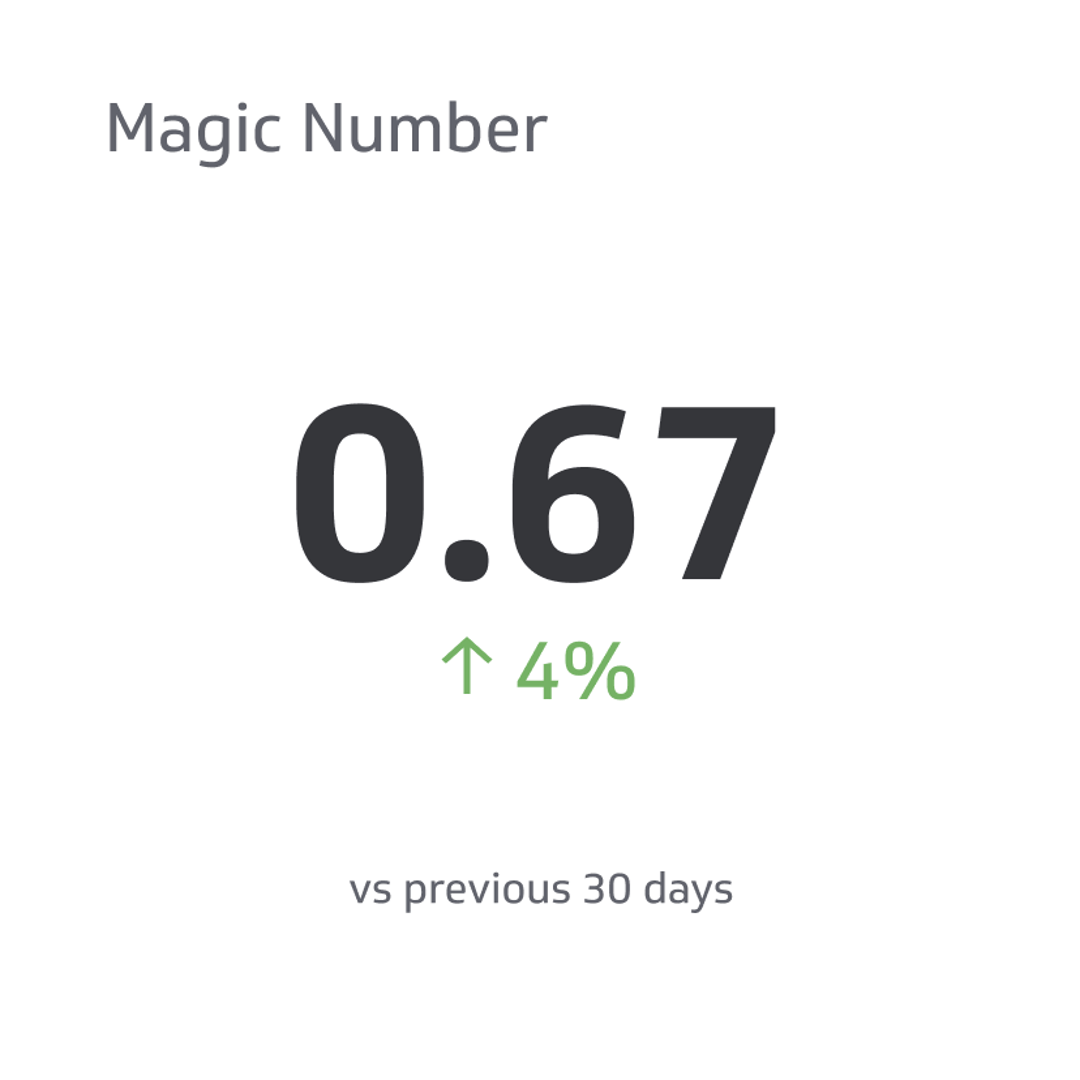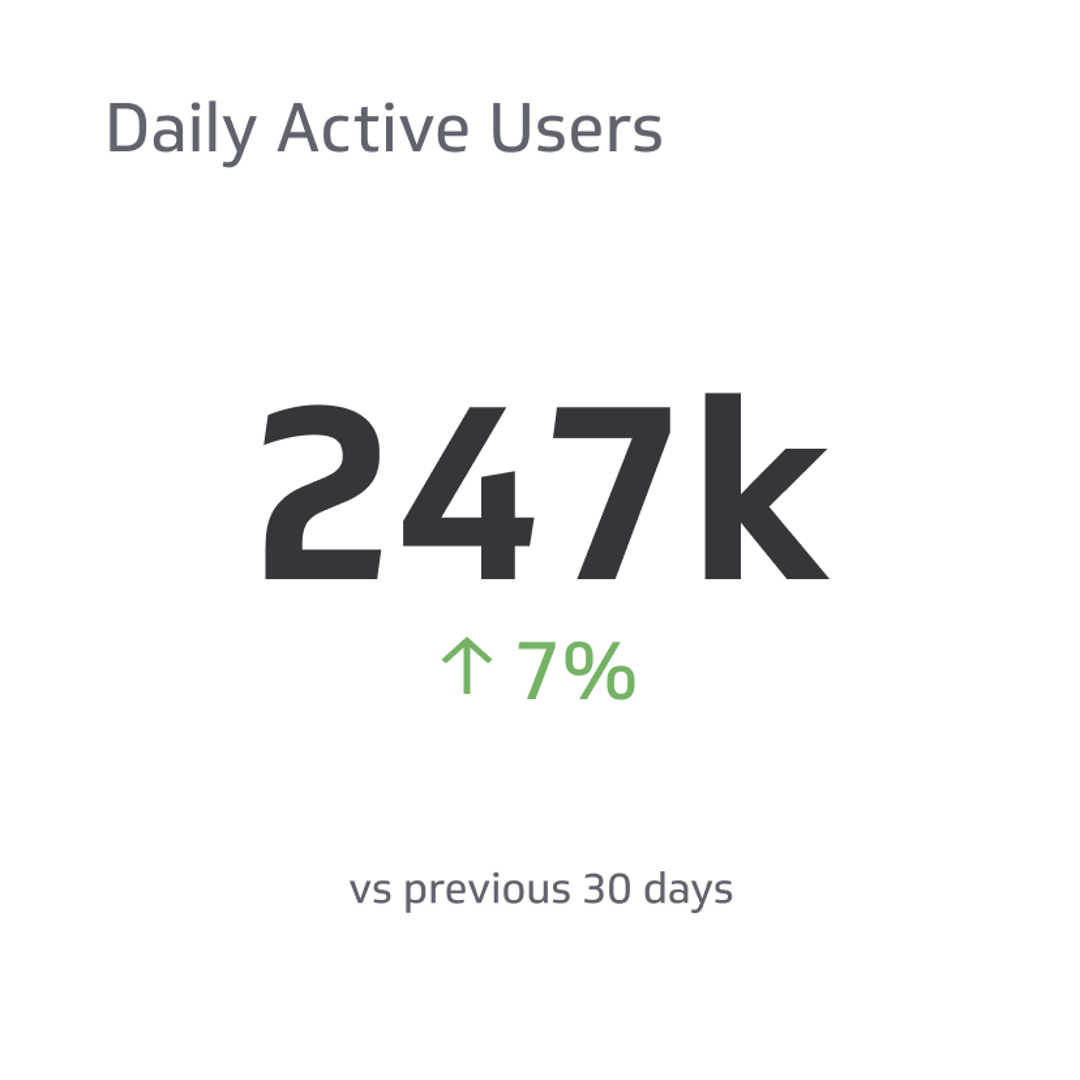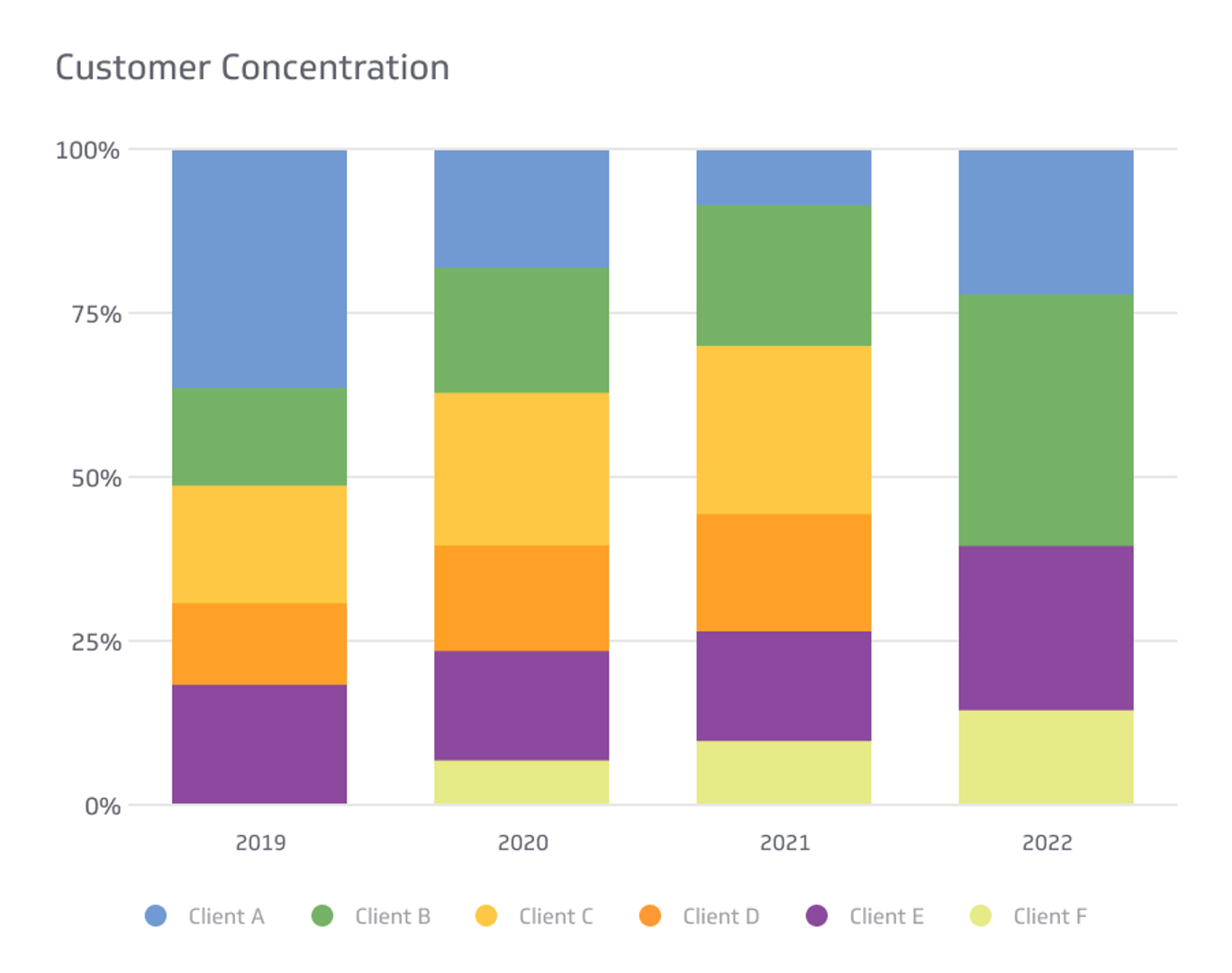Magic Number
Reliable efficiency metric for both startup and established software subscription brands.
Track all your SaaS KPIs in one place
Sign up for a 14-day free trial and start making decisions for your business with confidence.

Software as a Service (SaaS) has emerged as a transformative model in the business world, providing key advantages over traditional software development approaches. It has gained popularity among businesses of all sizes due to its cost-effectiveness, accountability, scalability, and security.
However, how can a SaaS business measure the effectiveness of its sales and marketing efforts? That's where the SaaS Magic Number comes in handy!
In this article, we'll delve deeper into the Magic Number and its role as a reliable efficiency metric for both startup and established software subscription brands. So let's get started!
What Is the SaaS Magic Number?
The SaaS Magic Number is a crucial ratio that indicates a company's operational efficiency and long-term sales and marketing sustainability. It is calculated by determining the amount of annual recurring revenue increase generated for each dollar spent on sales and marketing.
To calculate the SaaS Magic Number, you need to monitor several key metrics contributing to revenue generation and customer acquisition.
How Do You Calculate the SaaS Sales Efficiency?
In the SaaS market, sales efficiency is a significant indicator that calculates how successfully your company executes its primary task: selling software. By regularly analyzing sales efficiency, you can gain valuable insights into its performance and make necessary adjustments to your sales and marketing strategies.
Monitoring sales efficiency allows your software business to allocate resources effectively, drive revenue growth, and increase the perceived value of your offerings to potential customers. You can achieve superior visibility and make informed decisions by leveraging historical data and industry standards.
Various metrics are used to assess sales efficiency, but one commonly used indicator is gross sales efficiency. It measures the new gross yearly recurring revenue generated by your software business during a specific period and compares it with the sales and marketing expenses incurred over the same period.
Gross Sales Efficiency
Gross Sales Efficiency = current quarter gross new ARR / previous quarter sales and marketing expenses
Gross Sales Efficiency is a helpful SaaS metric for assessing the relationship between the current quarter's gross new ARR (Annual Recurring Revenue) and the previous quarter's sales and marketing expenses.
However, it has a significant limitation, as it only considers the gross new ARR and does not factor in churn. As a result, it can provide an incomplete picture of a company's overall sales efficiency.
Net Sales Efficiency
An alternative indicator called Net Sales Efficiency can be employed to address this limitation, which considers both new and churned clients.
To calculate net sales efficiency, it is necessary to first determine the "Net New ARR" metric. This involves considering various factors:
- Start with the net new ARR generated from new clientele.
- Add the growth ARR contributed by existing customers.
- Subtract the churned ARR resulting from lost consumers.
Once the net new ARR is obtained, divide it by the previous quarter's sales and marketing expenses to calculate net sales efficiency. This revised approach provides a more comprehensive understanding of the efficiency of sales and marketing efforts by considering both the acquisition of new customers and the impact of churn on revenue.
SaaS Magic Number Formula
Benchmarking sales efficiency to industry standards or competitors can be challenging due to limited access to their specific metrics, such as ARR, sales, and marketing expenditures.
Recognizing this obstacle, Scale Venture Partners (SVP) developed a metric called the "Magic Number" to facilitate meaningful comparisons among publicly traded SaaS businesses.
The Magic Number metric replaces ARR with generally accepted accounting principle (GAAP) revenue. GAAP revenue reporting follows standardized guidelines, ensuring the reliability and consistency of the data.
SaaS Magic Number Formula
The SaaS Magic Number formula measures the net growth and effectiveness of a SaaS company's marketing efforts in converting into revenue growth. It can be calculated using the following formula:
SaaS Magic Number = ((Current quarter's GAAP revenue – Previous quarter's GAAP revenue) x 4) / (Previous quarter's sales and marketing spend)
For example, consider a SaaS company with recurring revenue of $800,000 in Q2 and $600,000 in Q1. If their sales and marketing investment in Q1 was $700,000, the SaaS Magic Number for Q2 would be:
[(800,000 – 600,000) x 4] / 700,000 = 1.1
While the SaaS Magic Number isn't the only metric for measuring sales efficiency, it's one of the most effective methods to calculate ROI on your entire marketing budget.
How to Interpret Your Magic Number
You know how to calculate the SaaS Magic Number, but what does the number mean? When interpreting your Magic Number, take into account what each of these SaaS Magic Number standards has to say about the effectiveness of your sales process:
Magic Number Less than 0.5
A Magic Number this low often means that your business model is flawed. Your cost of new customer acquisition might be higher than the generated revenue without a SaaS pricing plan that can cover the costs.
Another possibility is that your SaaS solution may not be appealing enough to your target market. Additionally, a high churn rate could indicate a lack of product maturity, decreasing Annual Recurring Revenue (ARR). Thus, you must improve your product-market fit if your Magic Number is less than 0.5.
However, in some instances, a lower Magic Number might be acceptable in the short term, particularly if your business is experiencing rapid growth and is heavily investing in sales and marketing efforts to gain a significant market share.
But in the long term, it becomes essential to focus on increasing revenue from your existing customer base to sustain development and ensure profitability.
Magic Number Less than 0.75
A Magic Number below 0.75 may indicate that your company is investing more in sales and marketing than it is earning in recurring revenue. While the Magic Number is a crucial metric, it is not the sole criterion for evaluating your business's performance.
If your Magic Number is approaching 0.75, it suggests that you are making good progress in terms of sales efficiency. But determining whether to increase marketing spending or expand the sales team depends on your company's circumstances. Evaluate factors like cash runway, free cash flow, and gross margins to see if additional growth investments are justified.
Magic Number Greater than 0.75
A SaaS business with a Magic Number above 0.75 indicates that it generates more recurring customer income than it spends on sales and marketing. This suggests efficient customer acquisition and sustainable growth potential.
A Magic Number greater than 0.75 is a positive signal for investors, demonstrating solid sales and marketing efficiency, product-market fit, and effective monetization of the customer base.
With a Magic Number above 0.75, it is advisable to focus on developing sales and marketing strategies, allocating additional resources to areas like SEO, content marketing, and digital advertising.
Why Is the Magic Number Important?
The SaaS Magic Number is important as it measures the efficacy of your sales and marketing efforts. Here's why the SaaS Magic Number is significant in enabling optimization and reduction of client acquisition costs:
Sales and Marketing Efficiency
The Magic Number assesses the efficacy of a SaaS company's sales and marketing activities. It is a crucial tool in optimizing the sales and marketing approach by evaluating the cost of acquiring new customers and generating revenue.
Predictive Value
The Magic Number serves as a predictive indicator that provides insights into a SaaS company's prospects and growth potential. By analyzing historical data, stakeholders and investors can leverage this metric to make informed decisions regarding the company's future performance.
Additionally, this metric aids SaaS businesses in forecasting the sustainability of their growth rate by comparing the Customer Acquisition Cost (CAC) to the revenue generated from customers over a specific period.
Investor Confidence
The Magic Number is a commonly employed metric by investors and stakeholders to evaluate the potential of a SaaS firm. A high Magic Number can significantly enhance investor confidence in the company's ability to achieve sustainable growth and long-term value.
Competitive Advantage
SaaS businesses with high Magic Numbers possess a distinct competitive advantage over those with low Magic Numbers. A high Magic Number signifies that the company generates more customer revenue than it invests in sales and marketing, making it much easier to achieve long-term growth and outperform competitors.
How to Improve Your SaaS Magic Number
To enhance your SaaS Magic Number, focus on refining your sales and marketing operations to increase revenue and reduce customer acquisition costs. Here are some strategies to boost your SaaS Magic Number:
Refine Customer Acquisition Efficiency
One effective strategy for increasing your SaaS Magic Number involves reducing customer acquisition costs. You can achieve it by optimizing your sales funnels using targeted advertising, providing compelling content, and introducing referral marketing systems.
You can also break down your client acquisition expenses by channel and focus on the channels that produce the best return on investment.
Enhance Customer Retention Rates
The SaaS Magic Number is calculated by dividing the growth in recurring revenue by the previous period's recurring revenue. This indicates that the metric is heavily influenced by your capacity to retain existing customers and generate additional revenue over time.
One effective approach to improving customer retention rates is offering an exceptional customer experience. This can include providing excellent customer service, adopting consumer feedback, and regular engagement with your customers to understand their requirements and preferences. Consequently, you can enhance customer loyalty and satisfaction, increasing retention rates.
Increase Customer Lifetime Value (CLV)
CLV is a metric that determines the entire revenue a customer will likely generate during their association with your company. Increased CLV effectively increases the income generated from each client, which can fuel revenue growth and boost your SaaS Magic Number.
You can increase your CLV using various approaches, including:
- Upselling and cross-selling: You can enhance their CLV and create more income by offering clients other products or services that complement their current purchase.
- Client retention: As previously stated, increasing client retention rates can assist in enhancing CLV. It entails delivering exceptional customer service, responding rapidly to customer issues, and giving constant value to your consumers.
- Pricing optimization: Changing your pricing approach to better correspond with the value your product delivers will assist in enhancing CLV. It can include giving multiple pricing levels or grouping things to provide additional value to your clients.
Leverage Technology and Automation
Incorporating technology and automation can be highly beneficial to improve your SaaS Magic Number. By doing so, you can enhance efficiency, lower expenses, and provide an improved customer experience. Automation can be applied to various tasks to streamline procedures, improve sales and marketing effectiveness, reduce customer acquisition costs, and increase customer retention rates.
Expand Your Product Offering
Expanding your product offering can boost your SaaS Magic Number if it translates to a higher customer acquisition rate, retention rate, or customer lifetime value.By introducing fresh products, you can attract a larger spectrum of customers and improve revenue from existing customers, which can positively affect your SaaS Magic Number.
Why Your SaaS Business Needs More Than a Magic Number
While the SaaS Magic Number is a valuable metric to evaluate a SaaS company's growth strategies, it's important to remember that it's just one of many metrics to consider. Relying solely on the Magic Number can lead to a neglect of other significant performance indicators.
For instance, you can have a high Magic Number because of an influx of customers from a one-time marketing effort, but those customers may not stick around in the long run. So, it's crucial to monitor other key performance indicators like CLV and customer churn rate to make sure the company remains sustainable in the long term.
Final Thoughts
To sum up, the SaaS Magic Number is a powerful tool for measuring the efficiency of your sales and marketing efforts. When combined with other SaaS KPIs, it can help you create a cost-effective growth plan that enables you to scale your business without depleting your cash reserves.
Luckily, now that you know how to compute and comprehend your company's Magic Number, you can devise an effective strategy for increasing it and driving long-term revenue growth.
Related Metrics & KPIs



